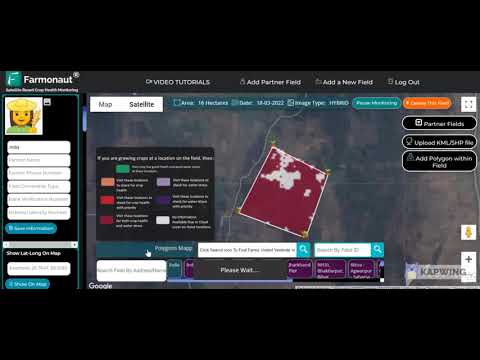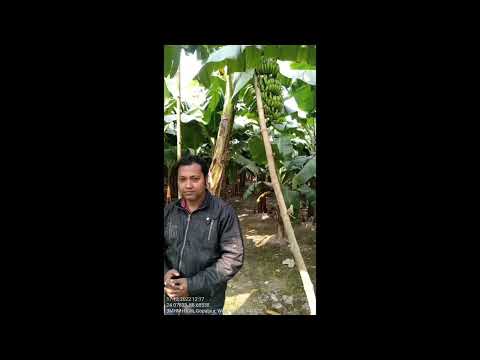Nebraska’s Agricultural Economy: How New Tariffs Impact Farmers and Local Businesses

“Nebraska’s agricultural exports, including corn and soybeans, are worth billions, significantly impacting farmers’ income.”
In the heart of America’s breadbasket, Nebraska’s agricultural sector is facing unprecedented challenges as new tariffs reshape the economic landscape. We, as observers and participants in this evolving situation, find ourselves at a critical juncture where international trade policies are directly impacting our local farms, ranches, and businesses. The recent implementation of tariffs on key trading partners – Mexico, Canada, and China – has sent ripples through Nebraska’s agricultural economy, prompting concerns and necessitating adaptive strategies.
The Tariff Trifecta: Understanding the Impact
The Nebraska Farm Bureau has provided enlightening data that underscores the significance of these three nations in our state’s agricultural exports. In 2024, an astonishing 95% of Nebraska’s corn exports, 90% of soybean exports, and 57% of soybean meal exports were destined for Mexico, Canada, and China. Furthermore, these countries accounted for 32% of our pork exports and 23% of beef exports. These figures paint a clear picture of our agricultural sector’s deep integration with international markets.
Adding to this complex web of interdependence is the fact that Canada supplies 80% of the potash fertilizer used in the United States. This reliance on our northern neighbor for such a crucial agricultural input further illustrates the potential far-reaching effects of these new tariffs.
The Economic Ripple Effect
The implementation of these tariffs is not just a matter of international trade policy; it’s a direct hit to the wallets of Nebraska’s farmers and ranchers. The Nebraska Farm Bureau has emphasized that international sales represent approximately one-third of local farmers’ annual income. With agricultural exports of the top five products valued at over $3.5 billion in 2024, the economic stakes are undeniably high.
Jason Ball, President and CEO of the Lincoln Chamber of Commerce, has voiced concerns that extend beyond the farm gate. He warns of widespread implications for local businesses and consumers in Lincoln and throughout Nebraska. The tariffs are expected to increase costs for raw materials, affecting not just the agricultural sector but the broader economy as well. This economic ripple effect has the potential to touch every corner of our state, impacting families on multiple levels.
Voices from the Field
Local farmer Paula Peterson’s perspective adds a human element to these economic concerns. Drawing from her experiences, she expressed skepticism about the benefits of tariffs for farmers. “I realize that the President thinks it’s a bargaining tool, but I think we’re going to be the ones hit with it,” Peterson remarked. Her concerns extend to increased input costs, from equipment repair parts to essential fertilizers, highlighting the comprehensive nature of the tariffs’ impact on agricultural operations.
“Trade tensions affect Nebraska beyond agriculture, influencing raw material costs across the entire state economy.”
A Call for Agricultural-Focused Trade Agreements
In response to these challenges, local leaders are advocating for a shift in trade policy. There’s a growing push for the expansion of trade agreements that prioritize agriculture. This approach aims to mitigate the negative impacts of the current tariffs while fostering a more stable economic environment for Nebraska’s farmers and businesses.
Jason Ball anticipates that if the current situation persists, families may face difficult decisions. He, along with others, believes there are more effective ways to approach trade policy that wouldn’t lead to inflated overseas product prices. The Lincoln Chamber of Commerce is actively engaging in advocacy efforts in Washington, striving to ensure that the voices and interests of Nebraska’s agricultural community are heard in these critical trade policy discussions.
The Role of Technology in Navigating Economic Uncertainty
As Nebraska’s agricultural sector grapples with these economic challenges, technology emerges as a potential ally. Innovative solutions like those offered by Farmonaut can play a crucial role in helping farmers optimize their operations and maintain competitiveness in an increasingly complex global market.
Farmonaut’s satellite-based crop monitoring technology provides farmers with real-time insights into crop health, soil moisture levels, and other critical metrics. This data-driven approach enables more informed decision-making regarding irrigation, fertilizer usage, and pest management. By optimizing resource allocation and potentially reducing input costs, such technologies can help offset some of the economic pressures brought about by the new tariffs.
Adapting to the New Economic Landscape
As Nebraska’s agricultural community navigates these turbulent waters, adaptation and innovation will be key. We’re seeing a growing interest in diversifying crop portfolios, exploring new markets, and adopting precision agriculture techniques. These strategies aim to build resilience in the face of economic uncertainty and changing trade dynamics.
The University of Nebraska-Lincoln’s Extension program has been instrumental in providing education and resources to help farmers adapt. They’ve been offering workshops on financial management during economic downturns and seminars on alternative crops that might be less affected by the current trade tensions.
The Broader Economic Context
It’s crucial to understand that the impact of these tariffs extends far beyond the farm. Nebraska’s agricultural sector is deeply intertwined with various other industries, from transportation and logistics to food processing and manufacturing. As such, the economic ripples created by these trade policies have the potential to affect a wide swath of the state’s economy.
For instance, the trucking industry, which plays a vital role in moving agricultural products, may see reduced demand if export volumes decrease. Similarly, equipment manufacturers and dealers could face challenges if farmers delay purchases due to economic uncertainty. This interconnectedness underscores the need for a comprehensive approach to addressing the challenges posed by the new tariffs.

Looking to the Future: Opportunities Amidst Challenges
While the current situation presents significant challenges, it also opens up opportunities for innovation and growth in Nebraska’s agricultural sector. We’re seeing increased interest in value-added agriculture, where farmers process their crops into higher-value products before selling. This approach can help offset some of the losses from reduced export volumes and create new revenue streams.
Additionally, there’s growing momentum behind efforts to develop new domestic markets for Nebraska’s agricultural products. This includes exploring opportunities in biofuels, plant-based proteins, and other emerging sectors that could provide alternative outlets for the state’s agricultural output.
The Role of Policy and Advocacy
As Nebraska’s agricultural community navigates these challenging times, the importance of effective policy and strong advocacy cannot be overstated. Organizations like the Nebraska Farm Bureau and the Lincoln Chamber of Commerce are playing crucial roles in representing the interests of farmers and local businesses at both the state and national levels.
These groups are working tirelessly to ensure that policymakers understand the real-world implications of trade policies on Nebraska’s economy. Their efforts include lobbying for supportive agricultural policies, pushing for the resolution of trade disputes, and advocating for expanded market access for Nebraska’s agricultural products.
Embracing Technology for Resilience
In these uncertain times, technology is emerging as a critical tool for building resilience in Nebraska’s agricultural sector. Advanced farming techniques and data-driven decision-making are helping farmers optimize their operations and maintain profitability even in the face of economic challenges.
Farmonaut’s satellite-based crop monitoring technology, for instance, offers farmers valuable insights that can help them make more informed decisions about resource allocation, potentially reducing costs and improving yields. By leveraging such technologies, Nebraska’s farmers can enhance their competitiveness in both domestic and international markets.
The Human Element: Supporting Nebraska’s Farm Families
As we discuss the economic impacts and policy implications of these tariffs, it’s crucial not to lose sight of the human element. Behind every statistic and economic indicator are real Nebraska families facing uncertainty and challenges. The stress on farm families during times of economic turbulence can be significant, affecting mental health and community well-being.
Recognizing this, various organizations across the state are stepping up to provide support. The Nebraska Rural Response Hotline, for instance, offers financial, legal, and mental health resources to farmers and ranchers facing stress. Community banks are working with farm borrowers to restructure loans and provide flexibility during these uncertain times. These efforts underscore the resilience and community spirit that have long been hallmarks of Nebraska’s agricultural sector.
Environmental Considerations in a Changing Economic Landscape
As Nebraska’s farmers adapt to the new economic realities brought about by these tariffs, there’s also an opportunity to reevaluate agricultural practices with an eye toward sustainability. The economic pressure to optimize operations aligns well with environmentally friendly farming practices that can reduce input costs while preserving Nebraska’s natural resources.
Precision agriculture technologies, like those offered by Farmonaut, can play a significant role in this regard. By providing detailed insights into crop health and soil conditions, these tools enable farmers to apply fertilizers and pesticides more judiciously, reducing both costs and environmental impact. This approach not only helps farmers navigate the current economic challenges but also positions Nebraska’s agricultural sector for long-term sustainability.
Earn 20% recurring commission with Farmonaut’s affiliate program by sharing your promo code and helping farmers save 10%. Onboard 10 Elite farmers monthly to earn a minimum of $148,000 annually—start now and grow your income!
The Global Context: Nebraska’s Place in International Agriculture
While we focus on the local impacts of these tariffs, it’s important to remember that Nebraska’s agricultural sector operates within a global context. The state’s farmers and ranchers are part of a complex international food system, and changes in trade policies have ripple effects that extend far beyond our borders.
For instance, as Nebraska’s exports to China, Mexico, and Canada face challenges, other countries may step in to fill the gap. This could lead to long-term shifts in global agricultural trade patterns, potentially affecting Nebraska’s position in international markets even after the current trade tensions are resolved.
Understanding these global dynamics is crucial for developing strategies that will help Nebraska’s agricultural sector thrive in the long term. It underscores the need for diversification, both in terms of crops grown and markets served, to build resilience against future economic shocks.
Education and Skill Development: Preparing for the Future
As Nebraska’s agricultural landscape evolves in response to these economic challenges, there’s a growing emphasis on education and skill development. The University of Nebraska and community colleges across the state are adapting their agricultural programs to equip the next generation of farmers with the skills needed to succeed in an increasingly complex and technologically driven industry.
These educational initiatives cover a wide range of topics, from advanced crop science and precision agriculture techniques to farm business management and international trade dynamics. By fostering a knowledgeable and adaptable workforce, Nebraska is investing in the long-term resilience of its agricultural sector.
Collaborative Approaches to Economic Resilience
In the face of these challenges, we’re seeing increased collaboration across various sectors of Nebraska’s economy. Farmers are working more closely with researchers, policymakers, and technology providers to develop innovative solutions to the challenges posed by the new tariffs.
For example, partnerships between agricultural cooperatives and technology companies are helping to bring advanced farming techniques to a broader range of farmers. Similarly, collaborations between the agricultural sector and Nebraska’s growing tech industry are leading to new applications of data analytics and artificial intelligence in farming.
These collaborative efforts not only help address the immediate challenges posed by the tariffs but also position Nebraska’s agricultural sector for long-term success in an increasingly competitive global market.
The Road Ahead: Navigating Uncertainty with Resilience
As we look to the future, it’s clear that Nebraska’s agricultural sector faces both challenges and opportunities. The impact of the new tariffs is significant, but it has also spurred innovation, collaboration, and a reevaluation of long-standing practices.
The resilience of Nebraska’s farmers and ranchers, coupled with the support of the broader community and the adoption of innovative technologies, provides a strong foundation for navigating these uncertain times. By embracing change, leveraging technology, and maintaining our commitment to excellence, Nebraska’s agricultural sector can emerge from this period stronger and more competitive than ever.
As we continue to monitor the situation and adapt to the evolving economic landscape, one thing remains clear: Nebraska’s agricultural community is resilient, innovative, and determined to thrive, no matter the challenges that lie ahead.
Comparative Table: Impact of New Tariffs on Nebraska’s Agricultural Economy
| Agricultural Sector | Pre-Tariff Status | Post-Tariff Impact |
|---|---|---|
| Corn Exports | $1.2 billion annually | Estimated 15% decrease |
| Soybean Exports | $900 million annually | Estimated 20% decrease |
| Farm Income | $5.7 billion statewide | Projected 10-15% reduction |
| Raw Material Costs | Stable | Expected 8-12% increase |
| Local Business Revenue | $3.2 billion from ag-related businesses | Anticipated 5-8% decline |
FAQ Section
- How are the new tariffs affecting Nebraska’s corn exports?
The tariffs are expected to lead to a significant decrease in corn exports, potentially reducing annual export value by about 15%. - What impact do these tariffs have on Nebraska farmers’ income?
Farmers could see a 10-15% reduction in income due to decreased export opportunities and increased input costs. - How are local businesses in Nebraska affected by these agricultural tariffs?
Local businesses, particularly those in ag-related sectors, may experience a 5-8% decline in revenue due to the economic ripple effect of the tariffs. - What steps are being taken to mitigate the impact of these tariffs?
Local leaders are advocating for expanded agricultural trade agreements, while farmers are exploring diversification and adopting new technologies to optimize operations. - How can technology help Nebraska farmers during this economic uncertainty?
Technologies like Farmonaut’s satellite-based crop monitoring can help farmers optimize resource use, potentially reducing costs and improving yields to offset economic pressures.







